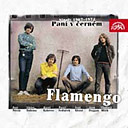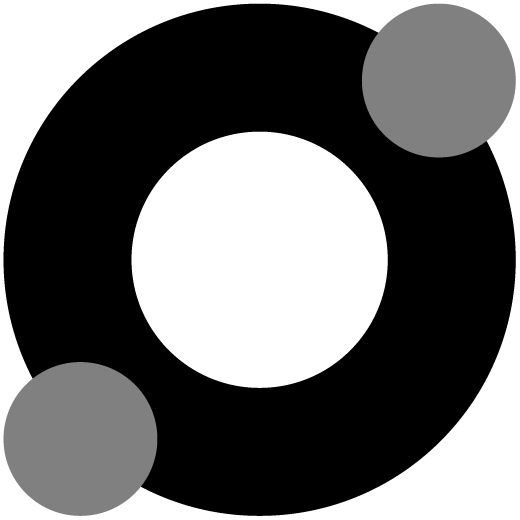Flamengo – Každou chvíli
from CD compilation “Paní v černém (singly 1967-1972)”, 2003, Supraphon SU5496-2311; originally from SP “Každou chvíli”, 1971, Supraphon 0431214; also a bonus track on CD “Kuře v hodinkách”, 1972/1998, Bonton 4910532
produced by Hynek Žalčík

CD compilation booklet
Vladimír Mišík, one of my most favorite singers, has already got an entry on Funky Czech-In where I have promised to bring him back with a Flamengo post. Well, this band is just too important for the Czech music history in order to squeeze its story into a short single weblog post, so here’s part one. Oh, and keep in mind: Flamengo is NOT Flamingo!
Flamengo’s biggest problem probably was the frequent exchange of their lead singers. Not that any of them guys were not good enough. Actually the opposite is true, each one was a personality on his or her own. It just didn’t really help to build up the group’s profile over the years. Thus, among the group members since 1966 were Viktor Sodoma (who left for the Matadors in 1967), Karel Kahovec (originally a Matador himself), Petr Novák (earlier and then again later with George & Beatovens), the former early sixties teenage idol Pavel Sedláček, the English lady Joan Duggan (who later joined Jazz Q along with the original Flamengo guitarist František Francl), the organist Ivan Khunt, for a very short time and unfortunately undocumented on records even the ex-Framus Five Michal Prokop and finally since 1971 Mišík, who himself already passed through the Matadors, George & Beatovens (as their lead guitarist for a couple of months!) and who had just been fired from Matadors’ follow-up Blue Effect.
Similarly complicated would be the attempt to describe Flamengo’s musical range. The early beat songs by Petr Novák already sound much like Petr Novák on his later G&B records. Kahovec on the other hand had his unique voice and song-writing style, too. But by 1968 the Czech scene became “infected” with R&B and soul and Flamengo again returned to playing a lot of cover versions, now even real funk by James Brown (coming soon on this channel, stay tuned). Then with the arrival of Khunt and Duggan in 1969 they focused on dark blues-rock. And the final phase nicely fits into the progressive rock drawer. So there you have the dilemma: one name, five different bands…
Supraphon released as many as 16 Flamengo songs on 7″ sides; some songs appeared on SPs with another artist on the flip side – a usual praxis in the sixties. It was however the final line-up that was going to make history when they recorded their only full album in 1971-1972, the masterpiece Kuře v hodinkách (The Chicken In The Wrist-Watch), the undisputed monument of Czechoslovak popular music. Flamengo’s legendary last edition consisted of Mišík, Ivan Khunt (1947-2002), the composer and arranger Jan Kubík on saxes and flutes, the virtuoso bass player Vladimír Kulhánek, one of the best Czech rock drummers of his generation, the ex-Primitives Group Jaroslav Erno Šedivý as well as the last remaining original member, Pavel Fořt, who switched from bass back to lead guitar in 1970.
Každou chvíli (Every While) as well as the similarly sounding b-side Týden v elektrickém městě (A Week In The Electric City) both predate the album sessions by only a few months. You can already clearly identify the “trademarked” super-compact and funky sound that determines the later LP. Mišík’s singing has also grown up since his departure from Blue Effect (as captured on the psychedelic album Meditace). This is already the voice that was going to have a huge impact on a whole new generation of young rock music fans as well as future musicians, myself included.
And then there’s the drums. One of the sound engineers in the Supraphon studio Dejvice was Petr Kocfelda. He has been recently asked in an interview (in Czech, part 1, part 2) how they actually managed to achieve such a steady drum sound and what compressor or limiter effects were they using then. “None,” he replied. The drummer Erno Šedivý obviously used to hit the skins so hard that they only had to adjust the mic inputs to the peak level which then remained pretty constant throughout the sessions. As a matter of fact, at that time the recording studio in Prague-Dejvice was still using a relatively old 4-track Studer machine along with a custom built tube mixing console which made the producers, engineers and especially the service technicians as much a part of the creative process as the musicians themselves. (Er, can the GarageBand generation still follow me what I’m talking about…? ;))
To be continued…
Every while (The chicken, part 1)
Posted in Funky Czech-In
3 Comments
Comments are closed.

All you need now is a chicken incubator with a builtin CD player:)) just joking of course and congrats on your achievment!!!
Pingback:Shotgun – Funky Czech-In
Pingback:On and on (The chicken, part 2) – Funky Czech-In